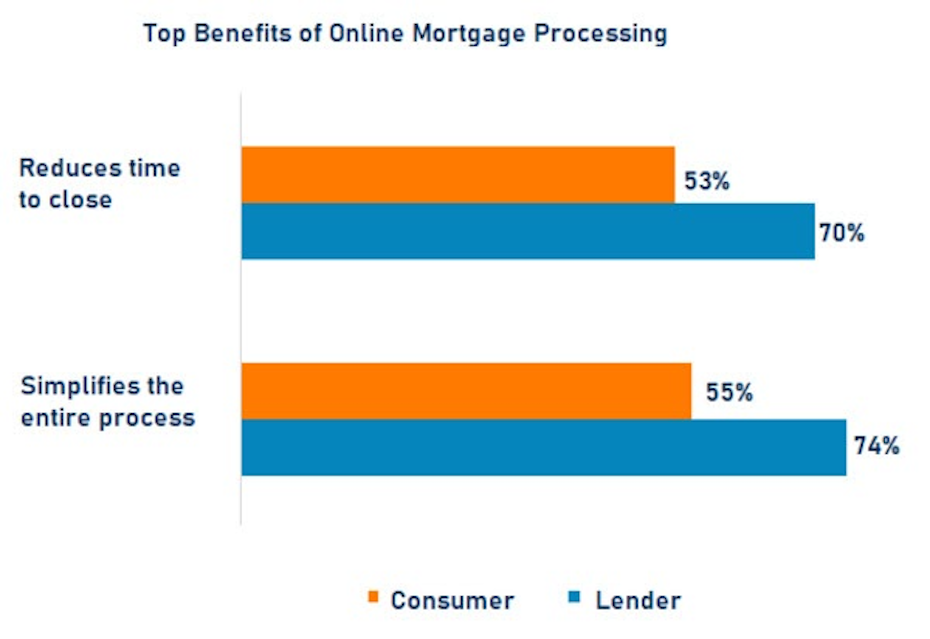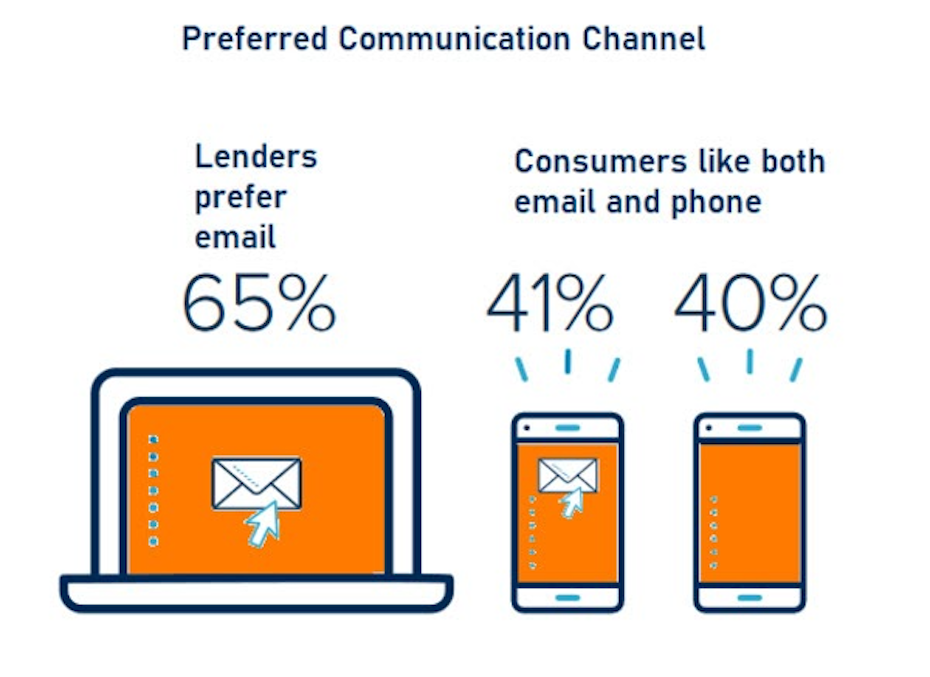Highlights:
- Speed and convenience are top of mind for potential home buyers looking for the right mortgage lender.
- Mortgage lenders must accommodate the increasing consumer demand for quick response times.
- The right communications solution is essential to improving speed to lead.

No one would argue the fact that technology has changed the mortgage lending industry dramatically in recent years. Both lenders and borrowers display a marked preference for technology that provides both speed and convenience.
That makes sense, considering that a mortgage lender’s speed-to-lead rate is often the difference between closing a deal and watching another competitor close it.
What is speed to lead?
Just as the name implies, speed to lead refers to the time spent between receiving a lead and responding to it. For example, if you receive an online mortgage query, and it takes your team 12 hours to respond to it, your speed-to-lead rate is 12 hours.
There are a number of factors that impact speed to lead, so measuring it accurately for a given period of time involves adding up all the different response times within that period and averaging them.
Why does speed to lead matter?
The simple answer to that question is that no one likes to wait for anything. With the advent of technologies to increase the speed of processes, consumers have become accustomed to speed and convenience and now expect it from all their business interactions, including the mortgage lending process.
Consequently, the viable life of an online lead is staggeringly short. According to a landmark study completed over a decade ago by Harvard Business Review, companies that tried to contact potential customers within an hour of receiving a query were nearly 7X as likely to qualify the lead as those that tried to contact the customer even one hour later. They were also more than 60X as likely to qualify the lead as companies that waited 24 hours or longer. An additional decade of exposure to advancing technology has certainly not slowed down that process, nor has it lowered the consumer expectation of speed.
According to 2020 research from Ellie Mae, 64 percent of consumers reported using online solutions for their housing needs, and 63 percent believe that an online mortgage process would make buying a home easier than an in-person process.
Why have online options become so popular for the majority of home buyers and lenders? As expected, the top two benefits identified by consumer and lender respondents were ease and speed.

However, simply offering an online option for mortgage applications is not enough. Borrowers still expect the human touch; they expect lenders to reach out to them when they complete an application, and often even before they do so. In the same survey, 47 percent of lenders reported reaching out to borrowers 1-12 hours after they submitted an online application, and 21 percent waited to reach out for 12-24 hours.
On the other hand, 27 percent reached out within an hour of receiving an online mortgage application. Which lenders do you think won the business? Considering the majority of borrowers who failed to complete the process revealed that they “got distracted” or “needed additional assistance,” it is clear that reaching out quickly to borrowers (increasing your speed to lead) is a winning strategy for lenders looking to remain competitive.
The same survey revealed that consumers are interested in using more than one channel of communication during the mortgage lending process, with email and phone as major preferences.

The takeaway? Whether you respond via email or phone, the key is to respond quickly. Speed to lead matters.
Ways to improve your speed to lead
Increasing your speed to lead is not a simple matter of changing just one thing in your mortgage lending process. Rather, it involves taking a multi-pronged approach that includes both a cultural shift in your organization and adoption of multiple digital channels to facilitate rapid communication with leads.
Build a culture that values speed to lead
The first step to increase your speed-to-lead times is to build a culture that prioritizes speed to lead. This involves setting expectations and goals for your sales team. Is everyone on your team clear about how and when to respond to borrowers?
Having a well-defined policy is essential. In some cases, your speed-to-lead time can suffer because of certain biases on the part of your sales staff. Leads that are perceived as less likely to close can languish in a salesperson’s queue while those considered as more likely to close are answered quickly.
It is true that your team should prioritize hot leads, but having a safety net in place to ensure that all leads are handled as quickly as possible will net you better results in the long run than simply leaving lead follow-up to chance or the whim of someone on your team.
Employ data-based prioritization techniques
On a related note, ensure that the way you prioritize leads is based on available data rather than a gut feeling. Data-driven lead scoring, especially when automated with machine learning, can go a long way toward ensuring that you can reach out quickly to the leads that should receive your immediate attention.
Use the right communications solution
Once you have the priorities in place, increasing speed to lead is a matter of finding the right communication channels to use to actually reach your leads at the right moment. That often comes down to choosing a communications platform that includes omnichannel support.
For example, speed to lead can be greatly improved by using a unified communications platform that includes capabilities such as:
- Phone
- Text/SMS messaging
- Emailing
- Outbound contact center solutions
- Inbound contact center solutions
- Video conferencing
- Chatbots
- Automated dialing
- Intelligent call routing
Let’s consider just three of those in a bit more detail: chatbots, SMS/text messaging, and intelligent call routing.
Chatbots: Chatbots are a great way to engage a lead in the moment. An enterprise-level chatbot can gather essential information for your sales team while the mortgage applicant is still online. This type of chatbot can automatically route leads to the appropriate salesperson, providing all-important context and prompting the salesperson to connect in real time.
SMS/Text messaging: According to The Financial Brand, 82 percent of consumers open every text message they receive. Consumers interact quickly with text messages, with 19 percent opening a text within one minute of receiving it, and 40 percent doing so within five minutes. Considering the need for speed, using text or SMS messaging with leads that opt-in is a great way to make contact early and often.
Intelligent call routing: Much like chatbots, intelligent call routing uses artificial intelligence to sort calls and route them to the salespeople in the best position to handle them. If you choose a platform with intelligent call routing, be sure that you can customize how to route calls.
Some mortgage lenders choose to route calls on the premise of “next available salesperson.” For some organizations, that works well. However, you can go beyond that type of simple routing. Look for a solution that allows you to route calls based on agent strengths instead. For example, based on borrower input, you might choose to route refinancing applications to a different agent than the one that handles first-time home buyer applications.
Intelligent routing allows you to automate a key part of the speed-to-lead equation by determining which agent would be best equipped to help which type of applicant. In that way, intelligent routing improves speed to lead, agent productivity, and customer experience at the same time.

UP NEXT: 8 reasons to modernize your financial services contact center
Increase your speed-to-lead times with RingCentral
RingCentral is a cloud-based communications platform that offers mortgage lenders all the communication tools they need to increase speed to lead. From phone to intelligent call routing to chatbots, RingCentral has provided leading mortgage companies with digital communication channels to appeal to every borrower demographic, enabling sales teams to quickly respond to leads and close more business.
To learn more about what RingCentral can do to enhance your mortgage lending process, request a demo today.
Originally published Jan 25, 2022
Looking For Startup Consultants ?
Call Pursho @ 0731-6725516
Telegram Group One Must Follow :
For Startups: https://t.me/daily_business_reads







